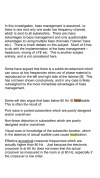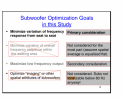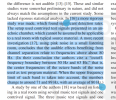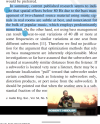Soundmixer
Senior Member
- Joined
- Mar 8, 2021
- Messages
- 433
- Likes
- 296
Those who deny localization of LF have a much bigger hurdle to jump over then just quoting someone else's study or statement, and until they have a good enough DSP or enough data to form an opinion based on actual testing then their opinion while important isn't in the same category.
Okay, you don't seem to understand this at all. This is not about DSP's, this is how our hearing functions. Todd Welti of Harman has already conducted tests on this (so did Martens both published on it in 2004), and the statistical data pointed to our ears being able to detect stereo beginning at MID-BASS frequencies, or 80hz and up. That also happens to be the threshold of localization for subwoofers as well. So this my friend, is not opinion, it is research and data.
Those who hear a difference must not be "shouted down" to say they're wrong. I started this 7 week journey believing all the statements against localization and my mind was changed when every single set up had unique qualities and feel of localization effecting the whole sound stage.
People hear what they want. When you objectively blind test what they hear, most if not all differences disappear. Having participated in enough sighted and double-blind testing, I can personally attest to that. On this particular subject matter, double-blind testing was used to erase any subjectivity from the test, and the results do not agree with your assertions. Now if you have some published work gleaned from your 7 weeks of study, tests, and data gleaned from it, please present it here. What you are presenting here so far is an opinion not supported by science.
Correction, two subs. The subs have little to do with the soundstage, but putting them closer to the mains does make it easier to integrate them.If running stereo subs the closer they are to mains will give a tighter sound stage
Stereo subwoofers to the sides creates an immersive experience like being on the stage of a concert instead of looking to the stage.
Two subs to the sides do increase the immersive experience, but the feeling of being on the stage of concerts comes from localization cues far above subwoofer territory.
This is opinion....untested opinion. This is not science either way.Mono subs for more energy
Stereo subs for realism
Two spaced subs will reduce seat to seat variations across one row of seats. Since there is no detectable stereo at bass frequencies, the rest of your comment is an air sandwich.Stereo subs if you can achieve balanced response in room
Mono subs if you can't (this will smooth out any stereo/panned content)





